- All-In-One Beekeeping for the Bees
- +1-608-728-8233
- info@beepods.com
Bee Adventurous: Finding Bees Wherever I Go
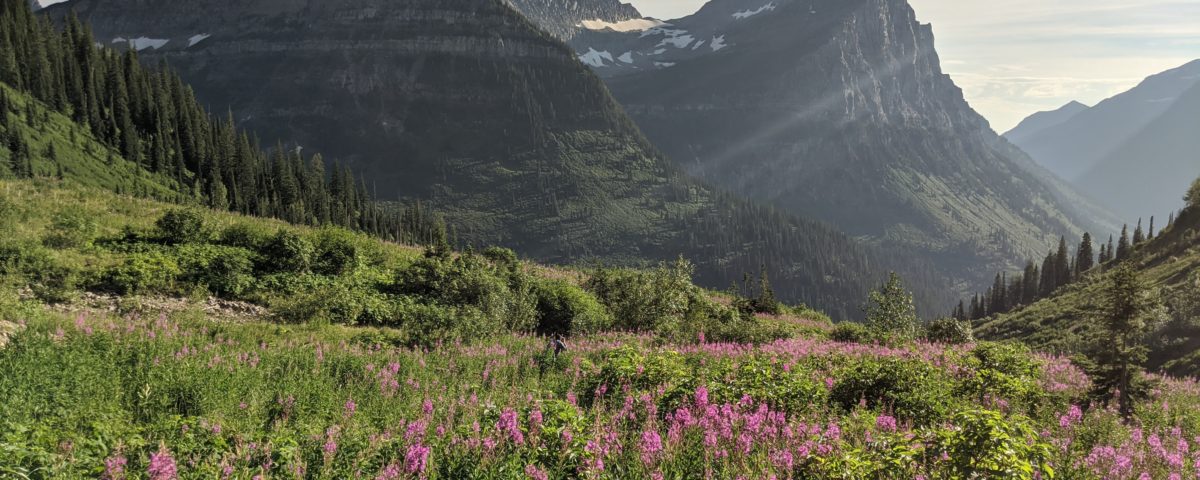
A little over a year ago I started writing for Beepods, and I quickly fell in love with bees. I learned that not only are they vital to the planet’s survival, but they are intricate, smart, and amazing little creatures. I started noticing bee-related things everywhere I went, especially as I was traveling across the country. So, I began keeping track of my bee-encounters and will be sharing them with you here. This will hopefully be the first of many bee travel blogs you come across!
At Beepods we want to inspire the idea of being adventurous. Bees are, after all, adventurous by nature. They travel long distances to bring back resources for their colonies. I travel long distances to bring back first-hand accounts and knowledge from bees and beekeepers across the country. Buckle up! I hope you enjoy this first #BeeAdventurous Blog!
Crown of the Continent
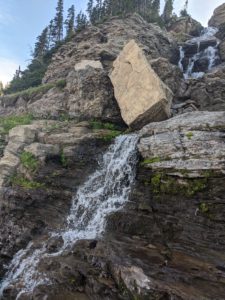 While in Missoula, Montana a woman said to my friend Scott and me, that Glacier National Park was a “different kind of beautiful.” And she’s right. As we drive up Going-To-The-Sun Road, weaving through towering pines, sunbeams peek through the boughs. The road begins to slant upwards.
While in Missoula, Montana a woman said to my friend Scott and me, that Glacier National Park was a “different kind of beautiful.” And she’s right. As we drive up Going-To-The-Sun Road, weaving through towering pines, sunbeams peek through the boughs. The road begins to slant upwards.
Up, up, up, we go, until we break through the cover of the trees and find ourselves looking at sheer snow-capped peaks and deep green valleys dotted with small mountain streams and waterfalls. Colorful wildflowers sway in the August breeze as clouds pass lazily through the bright blue sky. It’s no wonder Glacier is known as the Crown of the Continent. Only Mother Nature could wear a crown this magnificent. Up here, among the rich valleys and wildflower meadows, it is a honey bee’s paradise.
Fireweed
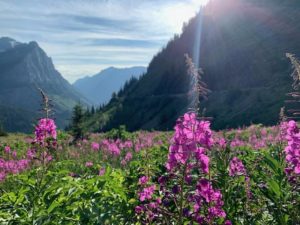
We stop at every overlook possible. Though, no amount of time or number of photos taken could ever do the views justice. The sun begin
s to wane, sending golden light through the cascading
waterfalls. Swaths of people trickle back down Going-To-The-Sun Road, headlights gleaming. We decide to stop at Big Bend overlook and walk out into Paradise Meadow.
The mountains are covered in hazy sunlight and we are surrounded by rich, pink Common Fireweed. I stand still for a moment, breathe in the mountain air and exhale slowly. I’m suddenly distracted from the view by a familiar sound. A soft buzz coming from the flowers around me.
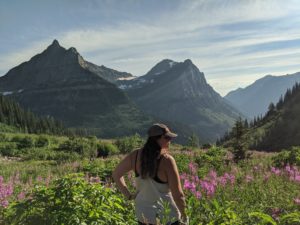
Me, Noticing Bees
“Bees!”, I yell, probably sounding like a lunatic, but I don’t care. Among the Fireweed are dozens and dozens of happy, buzzing pollinators. I crouch down by them, taking video after video. There are so many species types, and some I had never seen before. Dark bees, golden bees, big and fuzzy bumble bees – all sorts of bees.
I’m in heaven! Paradise Meadow is the perfect name for this place. I don’t know how long I sit there admiring them, but by the time Scott taps me on the shoulder, it’s near dark. Reluctant to leave, I glance back one more time at the view and the pollinators before getting back in the car.
Balance
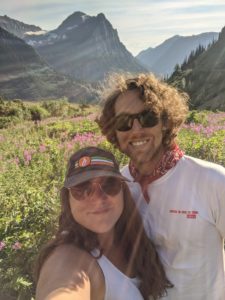
Glacier National Park is an intricate ecosystem, teaming with life. From the various birds, mammals, and plants that live there, bees play a major role in their survival. Bees pollinate the plants and trees that many animals eat and use for homes, especially the famous huckleberry. Huckleberries make delicious treats, but they also feed many of the animals in the park, including bears!
When I stand in a meadow full of pollinators I see more than busy bees at work. I see the key to keeping such a beautiful place the way it is. Without them, there may not be much of a world to explore at all.
Final thoughts
I loved every moment of my trip to Glacier. I think of that meadow often and hope to stand there again in the future. I’m excited to share more of my bee stories with you in the future. Stay tuned!
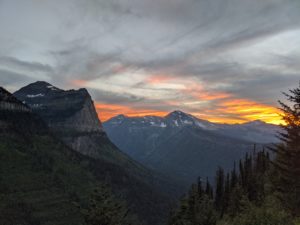
Monica Cull
Latest posts by Monica Cull (see all)
- How To Keep Your Bees Calm During An Inspection - June 30, 2021
- Pollinator Week: How COVID-19 And Modern Technology Have Impacted Bees - June 23, 2021
- Bee-Themed Activities You Can Do With Your Kids This Summer - June 17, 2021



